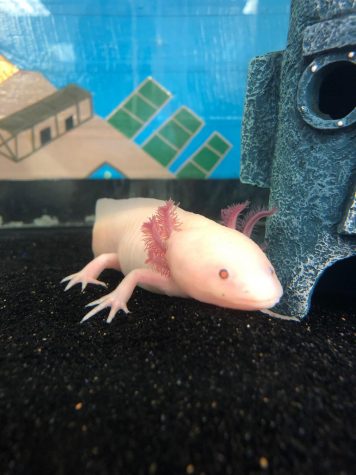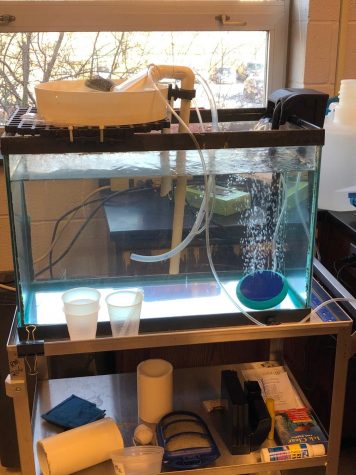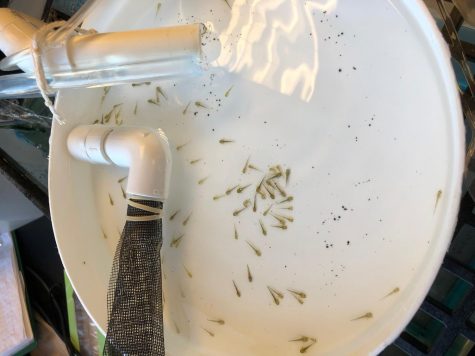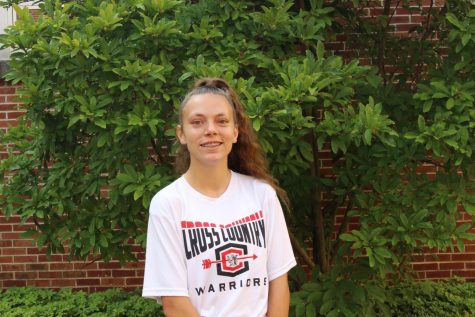Baby Axolotls Swim Around Susky
March 28, 2019
Editor’s Note: The Courier was notified via email on April 1, 2019 by junior Harry Pecunes that, due to a tank malfunction, all the baby axolotls died over this past weekend.
The science department now welcomes the new addition of baby axolotls.
Biology teacher Kerri Younkin has been attempting to breed her axolotls, and about three weeks ago, baby axolotl eggs were discovered.
Younkin has had her axolotls for about four years and decided this year to attempt breeding them for her AP Bio class to follow the progression.

Unfortunately, the first batch of baby eggs were not successful, but the class learned a lot from the experience.
“What we have done is change their tank and environment. We take the male and the female in a new tank, and it seems like that transition between new tanks and old tanks is what does it,” said Younkin.
It takes approximately a month for the male and female axolotls to breed after switching tanks, and each time they have attempted this, there were eggs a month later.
According to Younkin, axolotls can lay up to 150-200 eggs in a single clutch.
“It’s a lot of eggs, and it seems like both times now we’ve had between, depending on how you’re counting, [like] you’re just over 100 hatched so between 120ish and 100,” said Younkin.
It is possible to tell the eggs that will hatch from the ones that won’t and that is how Younkin keeps track of how many eggs there are.
It is unknown how many will survive because the survival rate in the wild is so low already.
“The biggest issue seems to be getting food. They only eat by seeing live food move, so you can’t just give them pellets or frozen blood worms which is what you can feed the adults,” said Younkin. “So you have to have a source and a steady source of live food from the minute they hatch.”
Due to feeding them live food, it is required that their tank must be cleaned constantly to prevent polluting the water.

Baby axolotls are very sensitive to the water quality, and it can be a main cause of the loss of them besides genetic defects.
Baby axolotls are a lot of work and require lots of attention and care, which is why Younkin has had junior Harry Pecunes documenting them since they were laid.

“What I do is everyday I check their water for levels of nitrite cause that is one of the main stressors for them, so I check that everyday. I feed them everyday, and then I count how many of them have died, so I can get a rough estimate of what general trend we’re going in,” said Pecunes.
Pecunes will take care of them until the end of April.
According to Younkin, the current goal is to keep as many as possible alive, then find the surviving baby axolotls a home.
“…Depending on how many survive, there are some people in the district who’ve requested them. Some teachers and people want them for their classrooms, or people want them to be able to use them in other educational settings,” said Younkin. “There are some students who’ve requested them. I’m not taking orders at this point. We don’t even know how many are going to survive, but we’ll try to house them as we know how many we would be needing houses for.”




